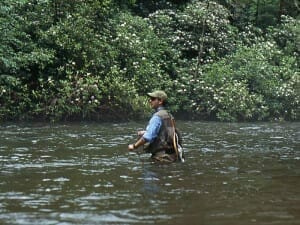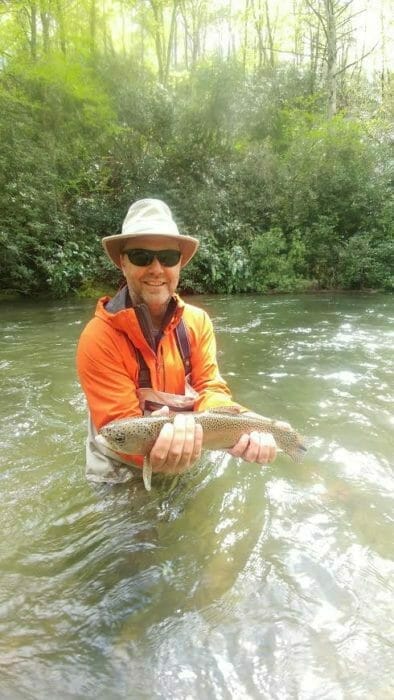After an unusually dry summer and fall of 2016 and a dry start to the spring of 2017, the fishing gods have finally smiled on Western North Carolina. In April, we experienced some serious rain events that brought river levels up, and the water seems to be holding at a normal springtime level. These rains brought with them some incredible fishing, as well as some sketchy wading. High water wading is not to be taken lightly. Things can go from bad to worse in a heartbeat if you are not prepared for the overwhelming force of swift moving water. Here are a few tips for e njoying the great fishing brought by high water while mitigating the risks associated with it.
njoying the great fishing brought by high water while mitigating the risks associated with it.
Customers and clients often ask me which type of boot sole will provide them the best stability. Some anglers swear by felt while others say rubber with studs is the only way to go. My answer to that question is the only way to safely navigate slippery rocks in moving water is to take your time and be sure of what exactly you’re stepping on before you transfer all your weight to the foot. This question is often posed by unsteady waders looking for an easy solution. Unfortunately, there is no easy answer. Move slow, keep your knees bent, and have the sense to back track if the going gets tough.
One useful accessory familiar to most anglers is a wading staff. A third point of contact with the river bottom is a big advantage. You have something to lean on if you get off balance and you have a tool for feeling what type of river bottom lies ahead. Detecting a 12 inch drop off or large hidden boulder before you’re on top of it might sav e you from a wet and dangerous situation. I have several older clients that are unsteady but rely so successfully on the assistance of a wading staff that they rarely need additional help moving around in the river.
e you from a wet and dangerous situation. I have several older clients that are unsteady but rely so successfully on the assistance of a wading staff that they rarely need additional help moving around in the river.
With or without a wading staff it is very helpful to be able to see the riverbed and determine the path of least resistance. Look for lighter colored areas which are a sign of sand or small pebbles. Dark areas are a sign of bedrock or bigger rocks which are often the slipperiest parts of the river bed. Polarized sunglasses will be a tremendous help in seeing all the way to the bottom of the river. Another accessory I would never leave home without is a wading belt. The function of a wading belt is not to make your waders look more fashionable. If you slip and fall and have water pouring into your waders, you do not want the pants of your waders rapidly filling up with water. I’m sure you can imagine how horrifying that situation would be.
Even when taking all the proper precautions, slips and falls are inevitable. You can ask a handful of my clients about some nasty spills I myself have taken. If you start feeling out of control the most important thing you can do is to stay calm. You’ve got to get on your feet and panicking will only make it harder. If you’re unable to get on your feet start swimming toward the shore or any shallow area you can identify. Yell for help if there’s anybody within earshot. Having a fishing buddy with you during high water is a good idea for this reason.
When the water is up fish are on the feed because of an influx of food being flushed through the river. Big fish in particular love to come out and feed during those time periods when the water is up. Get out and enjoy the great fishing but take a few extra precautions to make sure you make it back home at the end of the day.